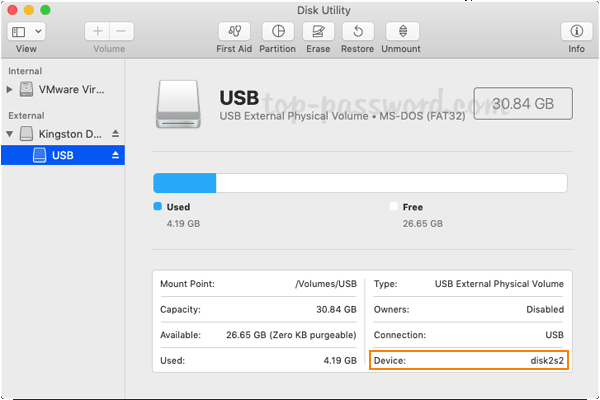

- HOW TO BOOT MAC TO DISK UTILITY HOW TO
- HOW TO BOOT MAC TO DISK UTILITY MAC OS
- HOW TO BOOT MAC TO DISK UTILITY INSTALL
- HOW TO BOOT MAC TO DISK UTILITY WINDOWS 10
- HOW TO BOOT MAC TO DISK UTILITY PASSWORD
Type "diskutil list" and hit the enter/return key to see a list of all connected drives.
Again, you will need a USB drive.Ĭonnect your USB drive to the Mac and then launch Terminal.
HOW TO BOOT MAC TO DISK UTILITY WINDOWS 10
The Terminal app is more complicated to use than other methods however it does not require you to use a third-party application in order to create a Windows 10 bootable USB drive. This will have created a Windows 10 bootable USB using a Mac that can now be used on your PC.

You can now quit Bootcamp and then Eject the USB to safely remove it. Once the process has been completed by the Bootcamp Assistant, the USB will have been renamed. Keep this in a location that is easily found (such as the Downloads folder).īootcamp will locate the downloaded iso file automatically however if it is not found, you can use the "choose" button to locate it manually.Ĭlick on Continue and wait until the USB is formatted and set up to become a bootable drive. iso file from the Microsoft website or another reliable site. Then click on continue.ĭownload a Windows 10.
HOW TO BOOT MAC TO DISK UTILITY INSTALL
Tick the box for "create a Windows 7 or later version install disk" and uncheck the "Install Windows 7 or later version" option. Please note that Boot Camp is not supported in macOS Mojave and later. In order to create a bootable USB using Boot Camp, you will require a USB that has 16GB of storage, or more.
HOW TO BOOT MAC TO DISK UTILITY PASSWORD
In your case, I do not know if any of your attempts at repair damaged the contents of the drive.Additional Tip: One Click to Create Windows 10 Bootable USB to Reset Password Using Mojave to try repairing an APFS container with Big Sur installed could more damage than good. Mojave incorrectly finds errors and Big Sur does not. When I run diskutil verifyVolume disk0s2 using Mojave and again using Big Sur, I get different results. On my 2018 Mac mini, I have Mojave and Big Sur installed in the same APFS container. Generally, running any application or command from a older version of macOS to repair a drive containing a newer version of macOS is not a good idea. In a typical macOS installation, there would be no free space between the two partitions. Here you posted the output from the command gpt -v -r show /dev/disk0. You can see this in the image you posted in step 8. The means your APFS container partition starts at sector 76806 instead of the value you choose of 409640. The question you gave as a link had a drive with a 512 byte sector size. I will be obligated if anyone can help with adding APFS container and running the system again!

| Capacity In Use By Volumes: ERROR -69620 *Previously before step 2 it shows simillary to this:
HOW TO BOOT MAC TO DISK UTILITY HOW TO
It seems that here might be the problem, but I don’t know how to fix it. When I click to Mount icon the error is shown: In disk utility I don’t have First Aid option anymore and the disk0s2 is displayed as Not Mounted. But from this time when I’m opening Recovery panel (command + option + R) It’s shown as macOS Big Sur. Restarted the mac but still the same error (folder icon with question mark). This time it works and response was that disk0 added
HOW TO BOOT MAC TO DISK UTILITY MAC OS
Simillary to the someone else problem described here: Unable to boot Mac OS and disk utility unable to repair disk after bootcamp delete windows partition


 0 kommentar(er)
0 kommentar(er)
